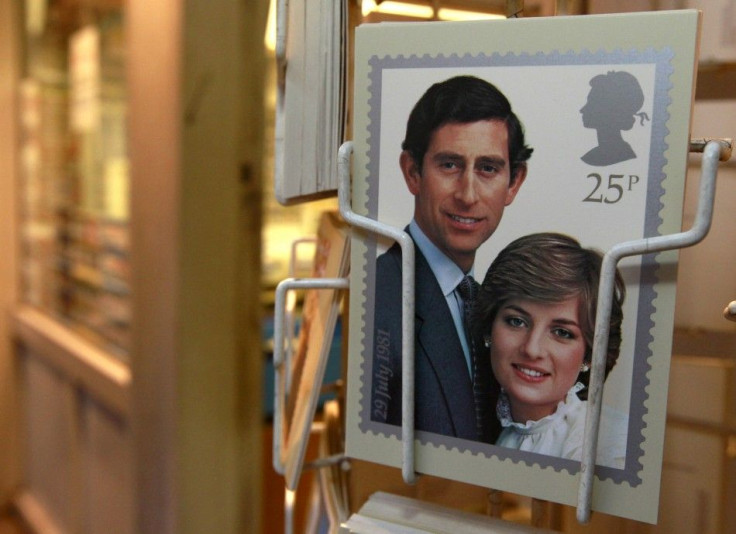COLUMN: Charles and Diana will be a hard act to follow

The upcoming Royal Wedding of Prince William and Kate Middleton will likely provide a nice, fairy tale-type escape from the deepening unrest in the Middle East and the non-stop stream of bad news surrounding Britain’s economy under a cloud of draconian budget cuts and massive job losses.
However, it will be awfully hard for William and Kate’s nuptials to match the intense media coverage and global impact of another Royal Wedding from thirty years ago -- when William’s parents Prince Charles and Lady Diana Spencer were married.
Diana arguably became the most famous (and beloved) woman on the face of the planet.
She was initially viewed as a “modernizing” face for the austere and tradition-bound Windsor family. Her subsequent inability to cope with the restrictions of her high status (as well as the eventual disintegration of her marriage) made her a sympathetic figure in the eyes of millions (although her behavior likely also alienated a few along the way who were appalled by her breach of royal etiquette, which included, among other travesties, bulimia, suicide attempts, and alleged adulterous relationships).
Nonetheless, her tragic death in an automobile crash in Paris in 1997 further guaranteed her everlasting fame and legend as “The Peoples’ Princess” and a global heroine of sorts.
Amazingly, the Charles & Diana wedding occurred long before the advent of the internet and during the infancy of 24-hour cable television networks. Still, the media coverage was monstrous, intense and virtually non-stop – Diana’s lovely countenance became as ubiquitous as the Coca-Cola symbol or McDonald’s arches.
Excluding wars (Gulf Wars), terrorist acts (9/11) and natural disasters (Katrina), no other event of my lifetime received as much coverage. The only thing that comes close was the O.J. Simpson murder trial. (The Kennedy Assassinations, the Vietnam war and Watergate were either a bit before my time, or I was too young to really understand them).
In any case, the Charles-Diana affair occurred during a period of tremendous change and flux.
In 1981, Britain was at a crossroads – the Empire was not only virtually demolished, but the Mother Country had to face two direct consequences of centuries of imperialism: the endless troubles in Northern Ireland; and the presence of millions of Commonwealth immigrants who poured into the nation over the prior three decades.
In Ulster, a terrible and unspeakable tragedy was taking place – Irish Republican Army (IRA) prisoners staged hunger strikes to protest conditions in jail and the British government’s removal of their Special Category Status (which essentially reduced IRA inmates to the status of common criminals, rather than “political prisoners.”).
In stark contrast to the extreme splendor and sparkling wealth of the royals, the Irish prisoners refused to eat or bathe, and even used their own excrement to smear messages on the grim, gray walls of their cells.
The most famous of the hunger strikers, Bobby Sands, died after 66 days of self-imposed starvation – in the process, also becoming a hero of sorts to millions around the world (presumably not the same people who revered Diana).
Incredibly, prior to his agonizing death, the incarcerated Sands was elected as MP for Fermanagh and South Tyrone.
The other issue Britain was facing at the time, immigration, had far greater consequences for the British mainland.
Whole parts of inner-city regions in London, Manchester, Bradford, Birmingham, Leicester and many other towns now had large populations of immigrants from India, Pakistan, Bangladesh and the West Indies – transforming the urban landscape into a multi-cultural polyglot in just one generation.
Not surprisingly, this sudden demographic shift created enormous racial tensions – building steadily from the 1960s, reaching a crescendo in the 1970s, then exploding into deadly race riots across England in 1981 (coincident with Charles and Diana’s wedding).
Immigration created extremist right-wing groups like the National Front (NF), comprising thugs (including many skinheads) who harassed, beat up, and sometimes killed Asian immigrants (a practice fancifully called “Paki-bashing”).
Margaret Thatcher, who became Conservative Prime Minister in 1979, hovered over that era.
Ironically, she inadvertently reduced the influence of the NF by co-opting their message – when she complained of foreign immigrants of an alien culture “swamping” Britain, the anti-immigration movement went mainstream and has arguably remained there ever since.
By 1981, the anger and resentment of the impoverished white working-class, and the rage of the even more impoverished minority immigrants, coalesced and ignited violent riots – neighborhoods like Brixton, Southall, Handsworth, Toxteth and Moss Side burned (literally and figuratively)
In April, Conservative politician Enoch Powell (who had become famous and notorious in the late 1960s for taking a strident anti-immigration message) warned of a racial civil war in Britain. (Ironically, the erudite Powell was by now an Ulster Unionist MP).
Aside from racial hostility and the Irish troubles, Britain had also sunk into a dire economic malaise by 1981 – indeed, one of the biggest hits that year was a little ditty called “Ghost Town” which bemoaned the hopelessness and grim reality of Britain’s dying urban neighborhoods.
Unemployment was high and climbing, manufacturing collapsed, Thatcher had nothing but contempt for unions
Amidst this dark and dreary backdrop, the Royal Wedding was like some fantastic Technicolor dream, recalling a long-vanished era of elegance, romance and power. It was the perfect tonic to all the ill winds blowing across Britain.
For some, the fantasy image of Diana – a pure, beautiful image of perfection – never disappeared.
Now, how can William and Kate possibly accomplish all that?
© Copyright IBTimes 2024. All rights reserved.





















